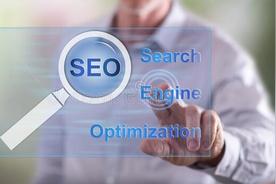
In today's digitally driven world, search engine optimization (SEO) plays a crucial role in enhancing user experience within the health and fitness branding and marketing strategies sector. With the ever-increasing competition and the need to stay ahead in the game, it becomes essential for businesses to optimize their online presence effectively. In this article, we will explore various SEO tools that can be utilized to improve user experience and drive success in the health and fitness industry.
1、Keyword Research Tools
Keyword research is the foundation of any successful SEO strategy. It involves identifying the most relevant and valuable keywords that potential customers use when searching for products or services related to health and fitness. Tools like Google Keyword Planner, SEMrush, and Ahrefs can help businesses discover these keywords and understand their search volume, competition, and relevance. By incorporating these keywords into website content, blogs, and meta descriptions, businesses can improve their search engine rankings and provide users with more targeted and relevant information.
2、Content Optimization Tools
Once the keywords are identified, it's essential to create high-quality, engaging, and informative content that resonates with the target audience. Tools like Yoast SEO, Grammarly, and Hemingway Editor can assist in optimizing the content for both users and search engines. These tools help in improving readability, grammar, and overall content quality, ensuring that the website provides value to its visitors and ranks higher in search results.
3、Website Speed and Performance Tools
Website speed and performance significantly impact user experience and search engine rankings. Slow-loading websites can lead to high bounce rates and negatively affect the overall user experience. Tools like Google PageSpeed Insights, GTmetrix, and Pingdom can help identify issues affecting website speed and performance. By addressing these issues, businesses can ensure that their website provides a smooth and seamless user experience, leading to increased engagement and better search engine rankings.
4、Mobile-Friendly Testing Tools
With the increasing use of mobile devices for browsing the internet, it's crucial for businesses to have a mobile-friendly website. Google's Mobile-Friendly Test tool can help determine whether a website is optimized for mobile devices or not. By ensuring that the website is mobile-friendly, businesses can provide a better user experience to mobile users, leading to increased engagement and conversions.
5、Backlink Analysis Tools
Backlinks play a significant role in improving search engine rankings and user experience. Tools like Moz Link Explorer, Majestic, and Ahrefs can help identify the quality and quantity of backlinks pointing to a website. By building high-quality backlinks from reputable sources, businesses can improve their website's authority and credibility, leading to better search engine rankings and a more positive user experience.
6、Local SEO Tools
For businesses with physical locations, local SEO is crucial in attracting nearby customers. Tools like Google My Business, BrightLocal, and Moz Local can help optimize a business's online presence for local search. By providing accurate and up-to-date information about the business's location, services, and contact details, businesses can improve their visibility in local search results, leading to increased foot traffic and revenue.
In conclusion, by utilizing the various SEO tools mentioned above, businesses in the health and fitness industry can enhance their user experience, improve search engine rankings, and drive success in their branding and marketing strategies. It's essential to stay updated with the latest SEO trends and tools to remain competitive in the ever-evolving digital landscape.
评论列表 (0条)